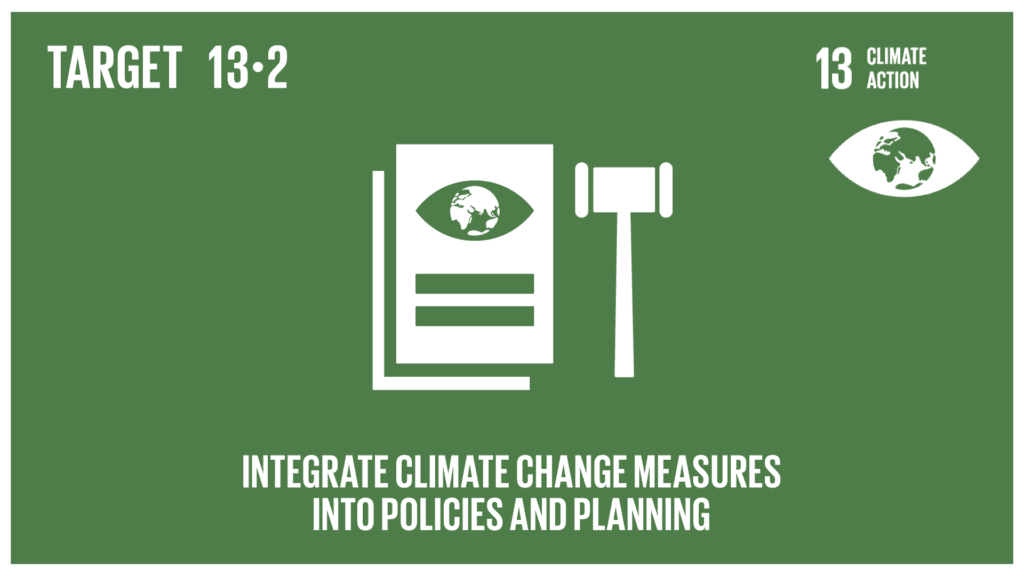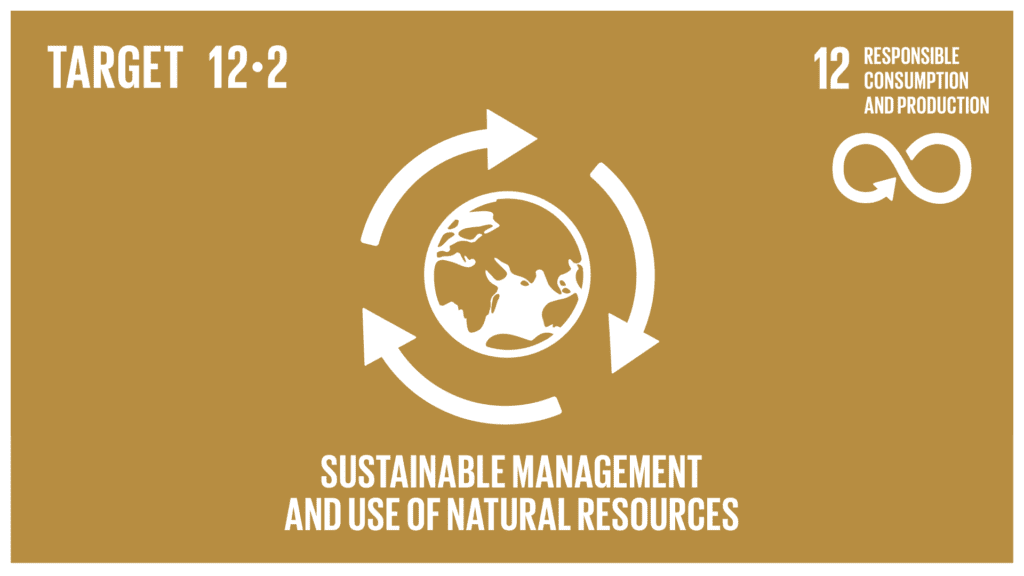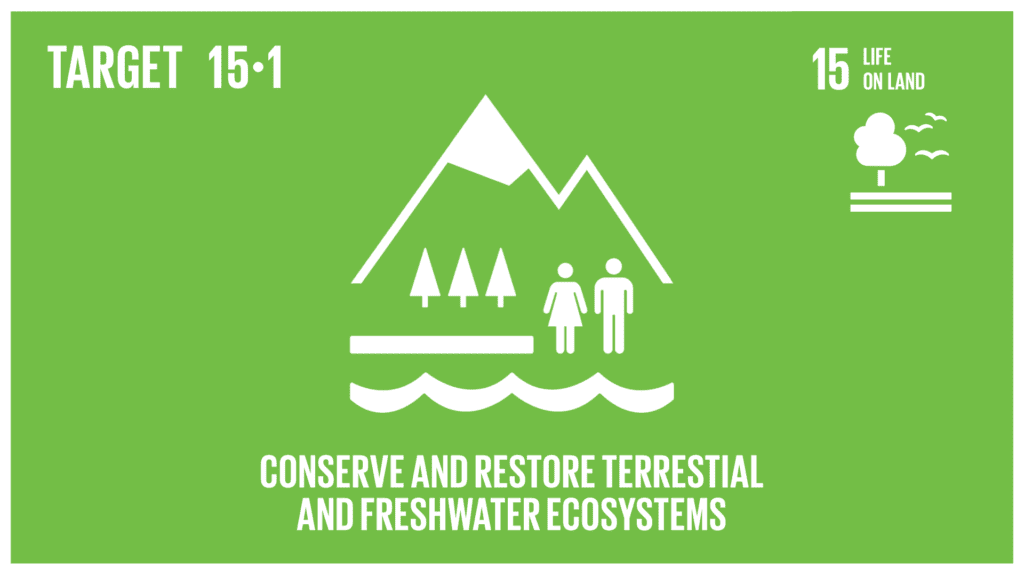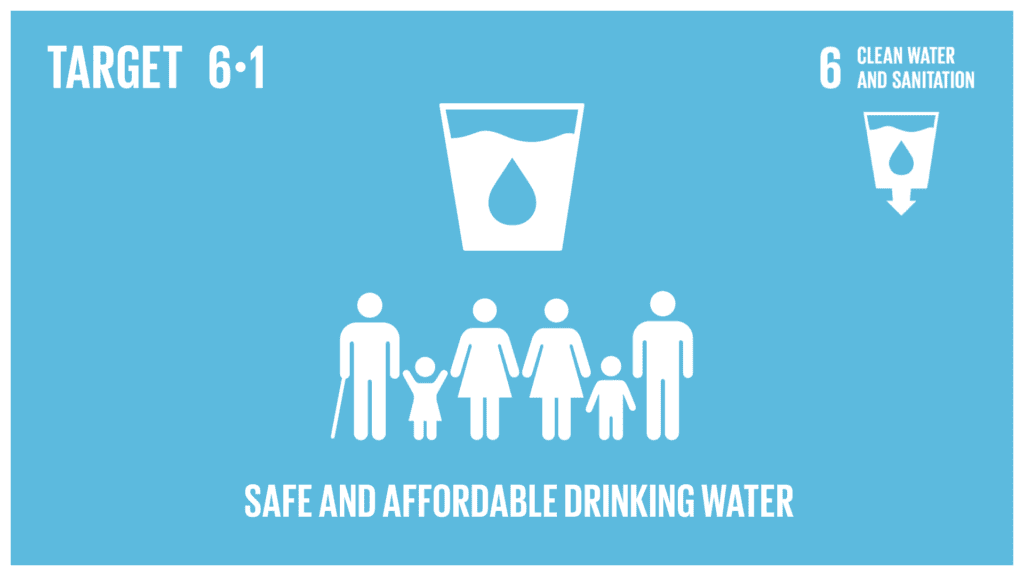The United Nations General Assembly declared on July 28, 2022 that everyone on the planet has a right to a healthy environment, a move backers say is an important step in countering the alarming decline of the natural world.
With 161 votes in favour, and eight abstentions*, the UN General Assembly adopted a historic resolution on Thursday, declaring access to a clean, healthy and sustainable environment, a universal human right.
In a resolution passed the morning of Thursday, July 28 at UN headquarters in New York City, the General Assembly said climate change and environmental degradation were some of the most pressing threats to humanity’s future. It called on states to step up efforts to ensure their people have access to a “clean, healthy and sustainable environment.”
The resolution is not legally binding on the 193 UN Member States. But advocates are hopeful it will have a trickle-down effect, prompting countries to enshrine the right to a healthy environment in national constitutions and regional treaties, and encouraging states to implement those laws. Supporters say that would give environmental campaigners more ammunition to challenge ecologically destructive policies and projects.
The resolution, based on a similar text adopted last year by the Human Rights Council, calls upon States, international organisations, and business enterprises to scale up efforts to ensure a healthy environment for all.
The UN Secretary-General, António Guterres, welcomed the ‘historic’ decision and said the landmark development demonstrates that Member States can come together in the collective fight against the triple planetary crisis of climate change, biodiversity loss and pollution.
The resolution will help reduce environmental injustices, close protection gaps and empower people, especially those that are in vulnerable situations, including environmental human rights defenders, children, youth, women and indigenous peoples”, he said in a statement released by his Spokesperson’s Office, according to Africa Renewal.
António Guterres, UN Secretary-General
Mr Guterres added that the decision will also help States accelerate the implementation of their environmental and human rights obligations and commitments.
In a statement, UN High Commissioner for Human Rights Michelle Bachelet also hailed the Assembly’s decision and echoed the Secretary-General’s call for urgent action to implement it.
Today is a historic moment, but simply affirming our right to a healthy environment is not enough. The General Assembly resolution is very clear: States must implement their international commitments and scale up their efforts to realize it. We will all suffer much worse effects from environmental crises, if we do not work together to collectively avert them now,” she said, according to Africa Renewal.
Michelle Bachelet, UN High Commissioner for Human Rights
A resolution for the whole planet
The text, originally presented by Costa Rica, the Maldives, Morocco, Slovenia and Switzerland last June, and now co-sponsored by over 100 countries, notes that the right to a healthy environment is related to existing international law and affirms that its promotion requires the full implementation of multilateral environmental agreements.
It also recognises that the impact of climate change, the unsustainable management and use of natural resources, the pollution of air, land and water, the unsound management of chemicals and waste, and the resulting loss in biodiversity interfere with the enjoyment of this right – and that environmental damage has negative implications, both direct and indirect, for the effective enjoyment of all human rights.
This resolution sends a message that nobody can take nature, clean air and water, or a stable climate away from us – at least, not without a fight,” said Inger Andersen, Executive Director of the UN Environment Programme (UNEP).
Inger Andersen, Executive Director, UN Environment Programme
The resolution comes as the planet grapples with what Ms. Andersen called a triple planetary crisis of climate change, nature and biodiversity loss, and pollution and waste.
At the national level, declaring a healthy environment a human right would allow people to challenge environmentally destructive policies under human rights legislation, which is well-defined in many countries.
These resolutions may seem abstract, but they are a catalyst for action, and they empower ordinary people to hold their governments accountable in a way that is very powerful,” said David Boyd, the UN Special Rapporteur for Human Rights and the environment, before the vote.
David Boyd, UN Special Rapporteur for Human Rights and the environment
According to Mr. Boyd, the Assembly’s decision will change the very nature of international human rights law.
Governments have made promises to clean up the environment and address the climate emergency for decades but having a right to a healthy environment changes people’s perspective from ‘begging’ to demanding governments to act”, he recently told UN News.
David Boyd, UN Special Rapporteur for Human Rights and the environment
Triple crisis response
As mentioned by the UN Secretary-General, the newly recognised right will be crucial to tackling the triple planetary crisis.
This refers to the three main interlinked environmental threats that humanity currently faces:
- climate change,
- pollution, and
- biodiversity loss.
The text of the resolution mentions all three of these main interlinked environmental threats.
Each of these issues has its own causes and effects and they need to be resolved to ensure a viable future for human kind on Earth.
The consequences of climate change are becoming increasingly apparent, through increased intensity and severity of droughts, water scarcity, wildfires, rising sea levels, flooding, melting polar ice, catastrophic storms and declining biodiversity.
Meanwhile, according to the World Health Organization (WHO), air pollution is the largest cause of disease and premature death in the world, with more than seven million people dying prematurely each year due to pollution.
Finally, the decline or disappearance of biological diversity – which includes animals, plants and ecosystems – impacts food supplies, access to clean water and life as we know it.
Alcohol and the triple planetary crisis**
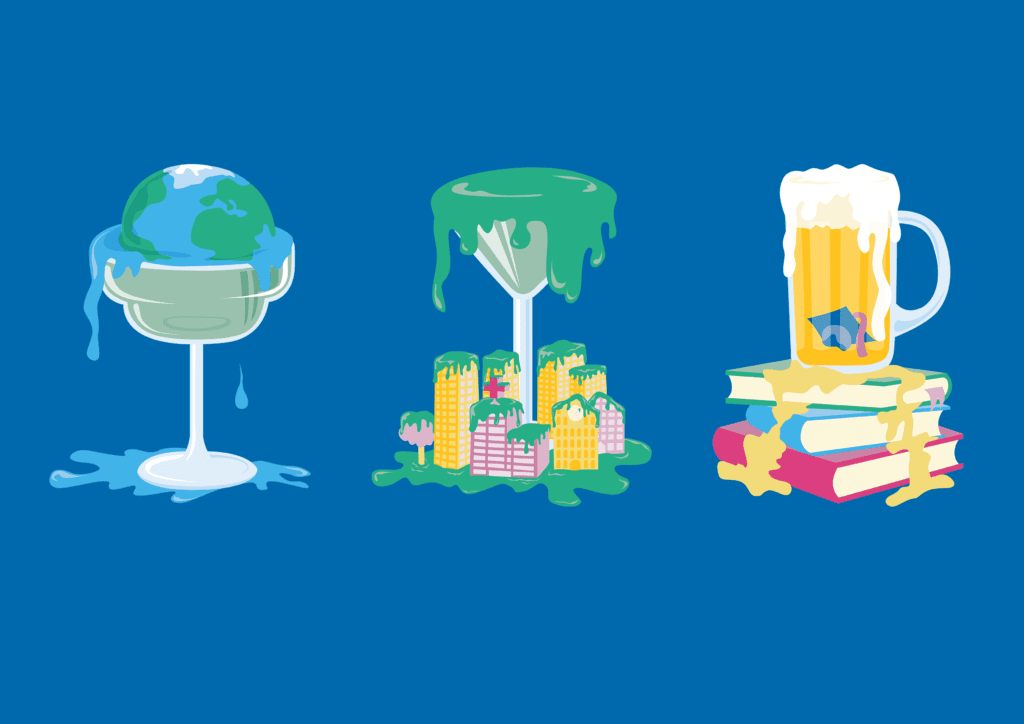
Analysis of the impact of alcohol on the Sustainable Development Goals (SDGs) shows that all three environmental threats are fueled by alcohol – by alcohol production, distribution, and other aspects of the alcohol industry.
Through its multiple health, social and economic harms, alcohol is a massive obstacle to sustainable human development, adversely affecting all three dimensions of development and reaching into all aspects of society.
Alcohol adversely affects 14 out of 17 SDGs and a total of 54 targets.
Healthy environment as a Human Rights requires states to consider the impact of climate change, the unsustainable management and use of natural resources, the pollution of air, land and water, the unsound management of chemicals and waste, and the resulting loss in biodiversity and to take measures to protect people’s Human Right to a healthy environment. These considerations also include alcohol across multiple SDGs.
Not green after all: Alcohol fuels greenhouse gas emissions, global warming
Very few people actually think of alcohol in terms of its climate impact. For achieving the goals of the 2030 Agenda, a more comprehensive understanding of the alcohol industry is critical.
Alcohol production, consumption fuels climate crisis
- The contribution made by the alcohol consumed in the UK accounts for 1.46% of the UK’s total greenhouse gas emissions. The share of beer in alcohol’s total emissions amounts to 65%.
- In a lifecycle analysis of a Spanish beer, production and transport of raw materials used in beer production was found to contribute over one third of the total global environmental impact of the beer production lifecycle.
Alcohol production, consumption fuels climate crisis
Alcohol, particularly beer, fuels the climate crisis, according to calculations of greenhouse gas emissions. The yearly amount of Australian beer consumption is equal in emissions to a car driving 1.94 billion km – the equivalent of 48 000 car rides around the world. Emissions related to beer production and consumption cause the biggest damage to the climate when compared to other beverages such as coffee or tea.
Other aspects of the alcohol industry contributing to global warming, greenhouse gas emissions, high energy use, pollution and waste of natural resources are:
- Refrigeration in the hospitality sector,
- Use of fertilizers,
- Water use,
- Packaging,
- Waste,
- Transport of raw material, and
- Distribution of the products.
The unsustainable management and use of natural resources
Alcohol production threatens sustainable use of natural resources. For example, the global importance of cereal crops to the human diet cannot be over stated. Cereals are by many criterea the most important group of food crops produced in the world. They are energy dense, and important sources of dietary protein, carbohydrates, the B complex of vitamins, vitamin E, iron, trace minerals, and fiber. The global cereal consumption directly provides about 50% of protein and energy necessary for the human diet.
The production of alcoholic beverages is very resource-intensive and not environmentally sustainable
- For instance, cereals are diverted from food production to the making of alcohol such as whiskey and beer (barley; sorghum), vodka (wheat), bourbon (rye), sake (rice).
- By some estimates, up to 92% of brewing ingredients are wasted.
In 2018 a scientific analysis by Poore and Nemecek showed that lowering alcohol consumption by 20% can help to:
- reduce land use of alcohol production by 39% on average;
- reduce greenhouse gas emissions by 31% to 46%; and
- reduce scarcity-weighted fresh water withdrawals by 87%.
The negative impact of alcohol production on availability of cereal crops for food, water security and food waste as well as the energy-consuming production processes are causing externalities that are unsustainable.
The pollution of air, land and water by Big Alcohol
Alcohol production degrades ecosystems and threatens biodiversity. Often permissions for alcohol production are granted without adequate environmental impact studies. But on the U.S. west coast, in Washington State, activists and experts detail how increased alcohol production will degrade farmland, jeopardize local food production and threaten the ecosystem.
Alcohol productions leads to biodiversity loss
King County, Washington State: The alcohol industry adversely impacts rural and agricultural land, locally grown food supply and salmon migrating through local rivers by degrading all agricultural production districts and destroying the Sammamish Valley river ecosystem.
Another example of Big Alcohol pollution is provided by liquor giant Diageo: Recently, The Scottish Environment Protection Agency found that Diageo has been operating three sites in Scotland without climate regulation permits for six years. This breach has now resulted in a serious fine.
In 2019, volunteers in 51 countries collected plastic waste and global beer manufacturer’s products were identified among the most frequent corporate plastic pollution.
Coca-Cola was named the world’s number one global plastic polluter (second year in a row), followed by Nestlé and Pepsico, according to an audit conducted by Break Free From Plastic. Global beer giants AB InBev, Carlsberg and Heineken are also listed among the leading plastic polluters in the world. In Europe, Heineken is in fact the third biggest polluter.
In Kenya, the pollution effects of brewery waste water on the Ruaraka river have been studied and documented since the 1990s. Kilani and Otieno write already in 1991:
The Tusker Brewery at Ruaraka (located about 6 km from Nairobi City Centre) is the largest brewery plant in Kenya, producing about 2.25 million litres of beer per day. The effluent from the plant is discharged directly into the Ruaraka River without any form of pretreatment.”
Kilani and Otieno, 1991
Drinking water or producing alcohol?
By 2025, an estimated 1.8 billion people will live in areas plagued by water scarcity, with two-thirds of the world’s population living in water-stressed regions. 785 million people don’t have clean water close to home. 70% of the world’s water resources are used for agriculture and irrigation, according to the Food and Agriculture Organization of the United Nations.
A third of the world’s biggest groundwater systems are already in distress and about 4 billion people, representing nearly two- thirds of the world population, experience severe water scarcity during at least one month of the year.
The effects on poor communities are most severe, when scarce resources are drained for the production of alcohol instead of sustaining community life and development.
Alcohol production is a threat to water security in many regions of the world
- The water footprint of wine is horrible:
- To get 1 liter of wine, 870 liters of water are needed.
- The water footprint of beer is horrific:
- Per 1 liter of beer, 298 liters of water have to be used.
All this is happening at the same time as the alcohol industry is causing major emissions of chemicals into waterways in its production, around the world and is fueling water insecurity.
For instance, in Cape Town, South Africa, 2018, the drought was so acute that the municipal water had to be turned off, while the wine industry spread over ever larger land areas and used more and more of the water reserves. And in northern Mexico, communities are boycotting AB In-Bev, the world’s largest beer producer, over their breweries causing water shortages.
They export our water in the form of wine.”
Vanessa Ludwig, CEO of Surplus People Project in South Africa
*States who abstained: China, Russian Federation, Belarus, Cambodia, Iran, Syria, Kyrgyzstan and Ethiopia.
**All evidence sources can be found in the report: “ALCOHOL OBSTACLE TO DEVELOPMENT. How Alcohol Affects the Sustainable Development Goals”
Sources
United Nations: “UN General Assembly declares access to clean and healthy environment a universal human right“
Africa Renewal: “UN General Assembly declares access to clean and healthy environment a universal human right“
UNEP: “In historic move, UN declares healthy environment a human right“
OHCHR: “Right to healthy environment“
OHCHR: “Right to a healthy and sustainable environment report“

